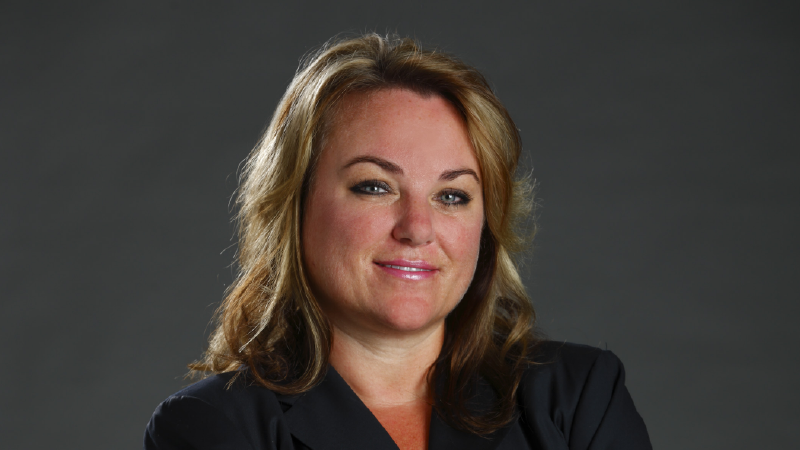Photo: Anne Chalmers, VP, Risk & Security & Chair, Materials Stewardship Committee
Since the mid-1900s, companies around the world have adopted formal risk assessment methodologies to manage risks to their business. This has evolved over the years, moving from a focus on financial risk to a more holistic understanding of risk as a factor touching all aspects of people, planet and profit.
Anne Chalmers, Teck’s Vice President, Risk & Security, and Chair of the Materials Stewardship Committee, has been with Teck for over 36 years. During this time, she has developed Teck’s Risk Management Program to help ensure factors that can impact our business are identified and properly managed. We sat down with Anne to talk about the evolution of the Risk Management Program at Teck, and the approaches her team employs today.
How did Risk Management start as a business function at Teck?
With the various facilities and products that Teck has – mining operations, exploration sites, and a smelting facility – there is a wide variety of risk profiles and mitigation needs. Teck started managing risk formally in the 1920s, beginning at Trail where we have the most intense operations in terms of complexity. It was best practice at the time to proactively address any possibility of environmental and health and safety impacts – which is just what was done at Trail. We can think of this as a precursor to today’s risk practices.
In the late ‘90s I was promoted to Manager of Risk, at which time I really started to grow the formal enterprise-level Risk Group. At that time the whole operating and business environment was shifting, giving businesses the opportunity to proactively manage risk by addressing the possibility of problems before they became realized issues. So that’s what we set about doing, taking the responsibility for mapping and managing risk into our own hands.
Does risk only look at Teck’s own operations?
Not at all. The Risk Management Program is also responsible for both upstream responsibility related to our suppliers and downstream responsibility related to our products.
Downstream from our operations, we have a commitment to product stewardship, making sure that our products are used responsibly by those we sell them to. I’m Chair of our Materials Stewardship Committee (MSC), which is responsible for ensuring this. We keep and manage a master product list for every single product Teck produces.
Traditional product assessments only look at the environmental inputs and outputs of a product from the moment it comes out of the ground to the moment it’s retired. However, our MSC goes beyond this to look at all aspects of a product’s impact. We use customer assessments, legal requirements in all the jurisdictions where we sell, logistics and transportation reviews, emergency and crisis response needs – just to name a few. We use this information to determine where and to whom we sell our products, in order to be sure we’re not contributing to any possible misuse.
As a raw materials supplier we don’t really have much “upstream” in the traditional sense since we are the origin of raw materials. Because of this, we generally consider our upstream suppliers to be those that provide the equipment and services we use. These suppliers provide us everything from heavy machinery and fuel to security or engineering services. We have standard practices of reviewing and screening our suppliers, both assessing them based on our expectations and code of conduct and performing a compliance and controversy review for any egregious issues. Above and beyond these due diligence processes we perform a small number of deep-dive assessments each year.
These deep dives sound interesting, could you tell us more about them?
The Risk Group performs an assessment of our suppliers, identifying certain industries or regions where there is increased potential for violations of our code of conduct or expectations for suppliers. For example, if there are potential violations of human rights due to the use of migrant workers, or the supplier sourcing from conflict areas. We reach out to the suppliers directly and go through their documents and records in detail. If we aren’t satisfied, we’ll meet with their leadership directly for a discussion to ensure they meet Teck’s expectations for responsible suppliers.
On occasion after these engagements, we may still have questions about the supplier’s operations. In those cases, we work with our networks to gather even more detail. In doing so we can get to the root of the truth about their responsible operations in the rare case there are questions about their sincerity.
Fortunately, there have been no egregious violations of our expectations for suppliers to date. Where there are violations, we will work with the supplier to ensure they have a mitigation plan to align themselves with our expectations, or we terminate our relationship with that supplier.
What comes next for Risk?
With the world as closely connected as complex as it is, the risks that can interrupt a business can have far-reaching effect. In 2021, among a continuing pandemic, Teck’s home province of British Colombia experienced record heat, wildfires, flooding and freezing. Weather events like these pose physical risks to us, our people, and the world at large. Going forward I think the physical risks of climate change will continue to pose a threat – but those aren’t the only risks. There are also risks related to mental health and burnout, and their impacts on our business, communities and our ability to continue to be productive. Risk and how we manage risk is a journey where the only constant is the need to evolve.
Learn more about our approach to Supply Chain Management on our website.






